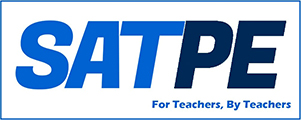Teaching Physical Education (PE) in Scotland has become an increasingly difficult, demanding, yet rewarding job. With an ever-growing diverse population of students, teachers are challenged to keep up with the constant change, both educationally and culturally, placing the needs of the students at the centre of their teaching and learning. These issues make the use of learner-centred teaching approaches ever more important. Teaching Games for Understanding (TGfU) is one such learner-centred approach and this paper will explore how critically engaging with literature has and will continue to inform my professional practice as an aspiring PE teacher.
I chose to explore TGfU as part of a year 2 research task and the reading I engaged with has provided me with a deeper understanding of learner-centred approaches, something extremely valuable for my professional development. A large focus within TGfU (and other learner-centred approaches) is that learners must work together to solve tactical problems in meaningful contexts. Also, the use of teacher questioning throughout lessons to develop students’ tactical understanding. Asking ‘what’ they need to do and ‘why’ they need to do it in a game (or modified game) context, develops students critical thinking and problem-solving skills (Butler et al., 2008). Furthermore, Gubacs-Collins (2007) highlights how the use of questioning can often improve students’ self-esteem which in turn increases their levels of success and enjoyment. However, the overuse of questions or asking poorly constructed questions can be detrimental to student learning (Butler et al., 2008). It is important, therefore, that as a student teacher, I have an awareness of how to pose effective questions when teaching games. Thomas et al., (2013) and Gubacs-Collins (2007) report that having a greater tactical knowledge and understanding of the activity that they were teaching would enhance their ability to ask improved and specific questions to learners. However, they also highlight the importance of not being overly reliant on pre-planned questions and having greater flexibility to construct context specific and relevant questions. This allows teachers the flexibility to meet the needs of learners and to trust the principles of TGfU (Casey & Dyson, 2009; Roberts, 2011). These are implications which through further professional learning and practice can become instinctive to teachers’ everyday practice.
Casey and Dyson (2009) and Mesquita et al., (2012) both implemented TGfU through a hybrid model, using Cooperative Learning and Sport Education. This was not to undermine TGfU as an approach but to suggest that it may provide students with a more holistic understanding of games. In particular, the hybrid models encouraged the students to develop a greater understanding of the teaching and learning process within TGfU (Casey and Dyson, 2009). This can allow for a greater student understanding of their specific roles and responsibilities, and provide an extremely rich and worthwhile PE experience.
This essay highlights how TGfU is a teaching model which with the right implementation can be used for effective teaching and learning (Butler et al., 2008). TGfU offers learning opportunities within the physical, cognitive, social and emotional domains. Supported by the used of appropriate questioning, TGfU involves students actively constructing their own learning process, applying previously learnt skills to both old and new experiences (Butler, 2006). Critical engagement with research literature in this area can inform my professional practice as a student PE teacher and if done successfully, inform and enhance my teaching which will lead to learners having a more positive PE experience.
